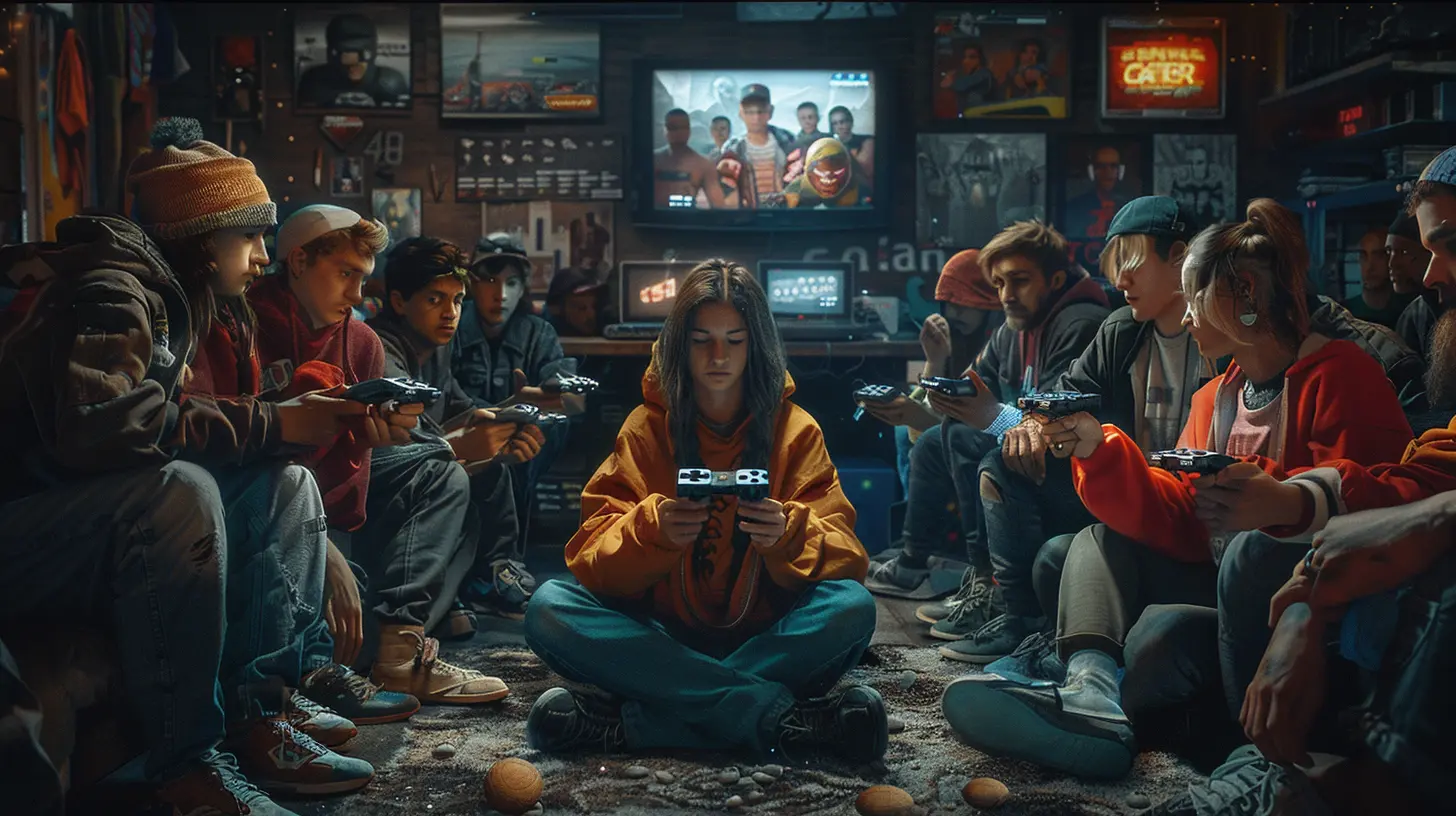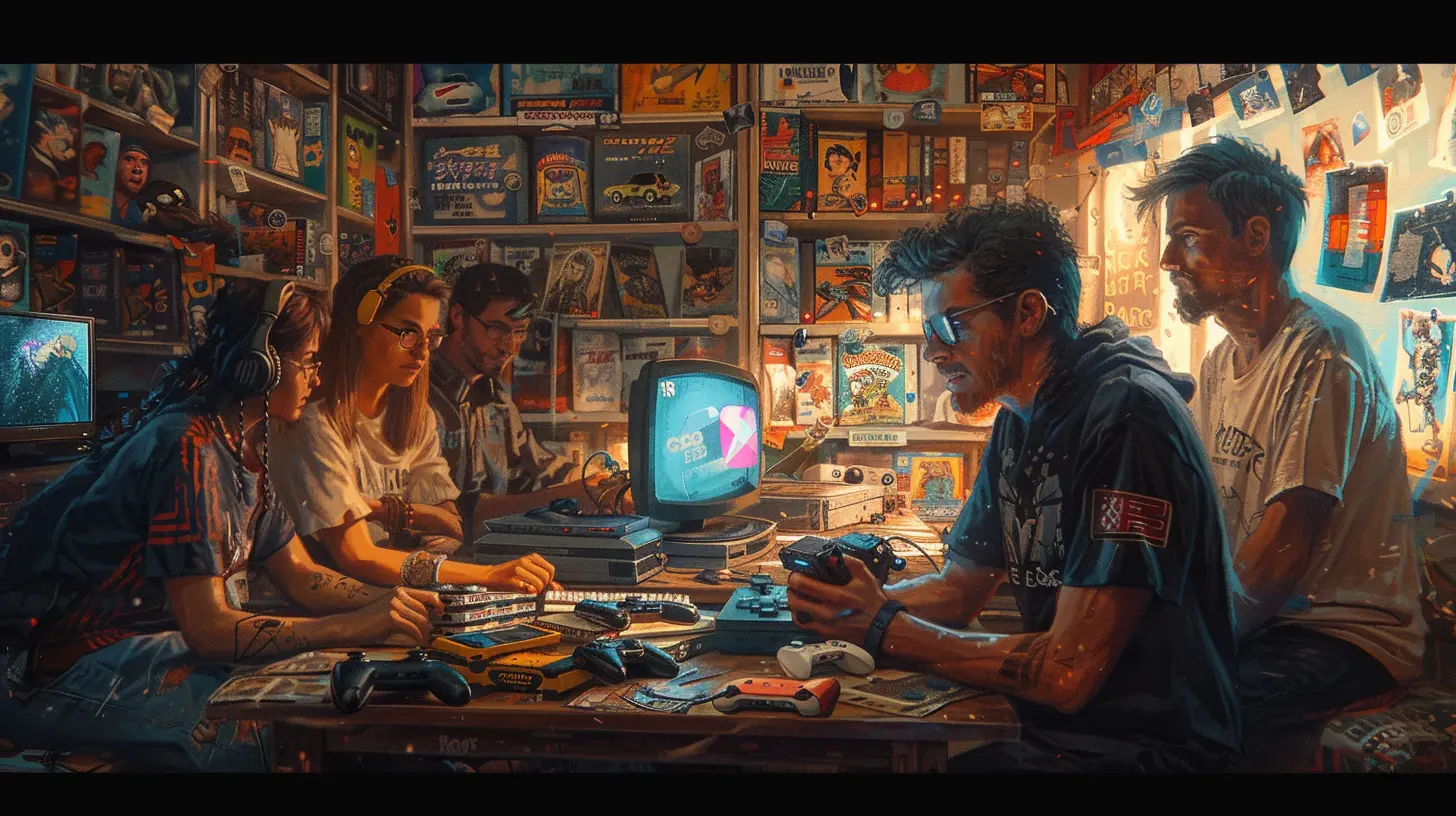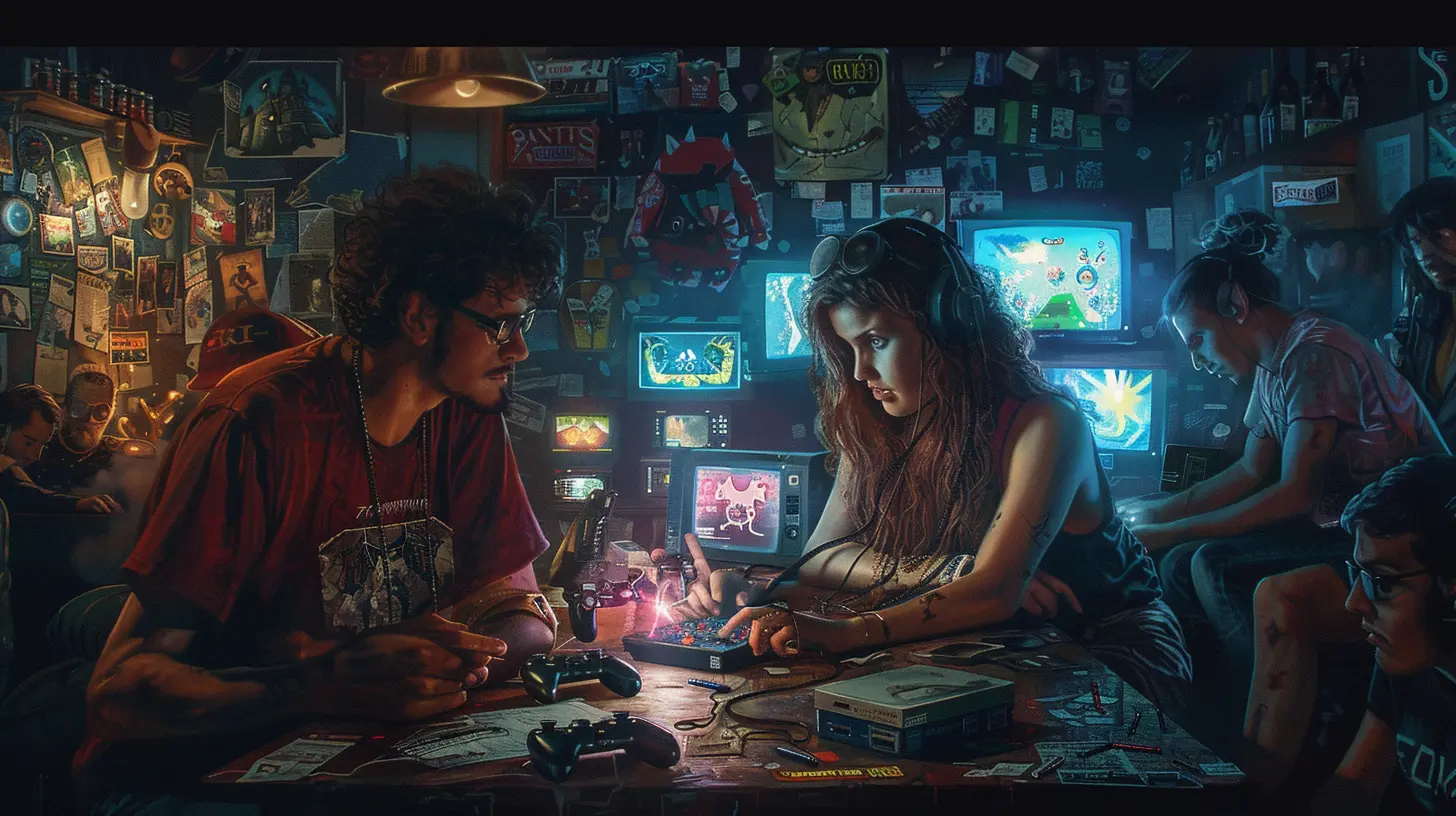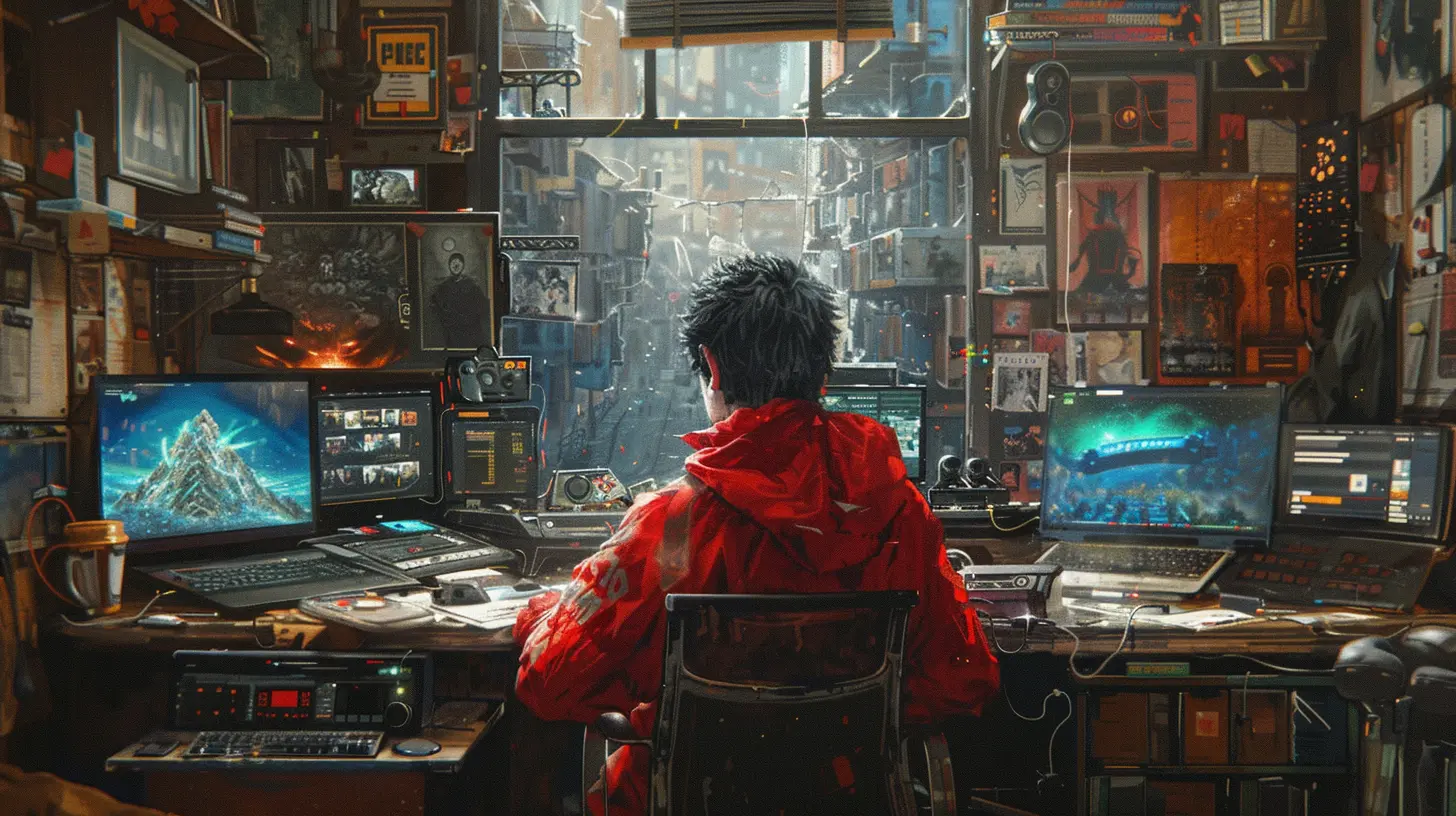Breaking Down the Clash of Gaming Subcultures
12 June 2025
Video games have evolved way beyond being just pixelated forms of entertainment. They're a cultural juggernaut now. From epic fantasy quests and fast-paced shooters to life simulation games and indie masterpieces, gaming has spread into every imaginable corner of pop culture – bringing with it a layered and often fragmented player base.
But here's the twist: Not all gamers get along. Yep, the world of video games is full of micro-communities, each with its own rules, values, and vibes. And sometimes, those vibes clash harder than a boss battle gone wrong.
So, what causes these divisions? Why does it feel like PC gamers throw shade at console players, or why some hardcore fans look down on casual mobile gamers? Grab your controller (or mobile, or mouse), and let’s break down the clash of gaming subcultures.
What the Heck Is a Gaming Subculture?
Before we get into the drama, let’s back up a bit.A subculture is basically a mini-society within a bigger society. Think of it like fandoms, but with their own identity, shared slang, specific norms, and behaviors. In gaming, subcultures pop up around types of games, preferred platforms, competitive goals, or even aesthetics.
So, whether you're a die-hard Dark Souls masochist who lives for the grind or a cozy Stardew Valley player who just wants to grow some digital crops in peace, you've probably found yourself part of a gaming subculture.
The Main Gaming Subcultures: Who’s Who in the Digital Arena?
There are tons of them, but here are some of the biggest players on the gaming subculture stage.1. Hardcore vs. Casual Gamers
This is honestly the most obvious divide.Hardcore gamers? They’re the ones squeezing every ounce of challenge from a game. Think speedrunners, min-maxers, and people who play the same game for thousands of hours. They often pride themselves on skill, strategy, and deep game knowledge.
Casual gamers, on the other hand, prefer low-stress experiences. They might play just to unwind after work or during downtime – mobile puzzle games, farming sims, or story-driven games are usually the go-to.
Now, here’s where the tension comes in: Hardcore gamers often (wrongly) see casuals as less “real” gamers, while casuals might find the hardcore crowd overly intense or even gatekeep-y.
But here's the thing – both sides are valid. Games are meant to be fun. How you choose to enjoy them doesn't need to be “justified.”
2. Console vs. PC vs. Mobile Gamers
This is the classic schoolyard scuffle of gaming. Pick a side, defend it till the bitter end.- PC Gamers: Proud of their high frame rates, customizable rigs, and mods. They tend to be vocal about superior performance and graphics. There's a bit of an elitist reputation here – PC is often dubbed “the master race” as a tongue-in-cheek (but sometimes not-so-funny) joke.
- Console Gamers: They're loyal to the likes of PlayStation, Xbox, or Nintendo. They love the simplicity – just plug-and-play – and often form strong communities around exclusive titles. Console wars are real: Xbox vs. PlayStation fans have been at it for years.
- Mobile Gamers: The fastest-growing group, thanks in no small part to everyone having a smartphone. They play games like Clash Royale, Free Fire, or Candy Crush on the go. The shade they get? Many gamers still see mobile as “less serious” – even though companies are investing billions into mobile esports and RPGs.
The console vs. PC vs. mobile debate is honestly unnecessary. Each platform offers a unique experience, and technological boundaries are getting blurrier anyway.
3. Single-Player Story Lovers vs. Multiplayer Junkies
Let's face it: Some of us game to escape into a rich, immersive world. Others hop into a match to dominate real-world opponents.- Single-player fans adore narratives, lore, exploration, and character development. Think games like The Witcher 3, God of War, or Red Dead Redemption 2.
- Multiplayer users lean into competition or co-op chaos. Whether it’s Call of Duty, Fortnite, Valorant, or League of Legends, the social and adrenaline-fueled aspect is the real hook.
Tension flares when one group sees the other as “missing the point” of gaming. The former might think multiplayer lacks depth, while the latter sees single-player games as outdated or lonely.
Both experiences are valid though. It's like choosing between reading a novel alone or going to a party – it depends on your mood and preference.
Why These Clashes Happen
Alright, let’s get deeper. Why are gamers so divided sometimes?1. Identity and Belonging
Gamers are passionate people, and for many, their preferred games or platforms are more than hobbies – they’re part of their identity.So, when someone critiques their style or type of game, it can feel personal, like an attack on who they are. And that’s where defensiveness kicks in and communities get territorial.
2. Gatekeeping and Elitism
This one’s a biggie. Some folks treat gaming like it’s an exclusive club with strict membership requirements.Ever hear someone say, “You're not a real gamer unless you’ve played Dark Souls” or “Mobile games don’t count”? That’s gatekeeping – and it’s toxic.
Everyone’s gaming journey is different. You don’t need to memorize frame data in Street Fighter to call yourself a gamer. You just need to enjoy playing.
3. Online Anonymity
Let’s be real. People feel bolder (and sometimes meaner) behind a screen. Online forums and in-game voice chats can quickly go from banter to full-on war because of the protective shield anonymity offers.The result? More clashes, more misunderstandings, and more division.
The Impact of Gaming Subculture Wars
These divisions might seem harmless, even amusing – but they’ve got consequences.1. Toxic Communities
When elitism runs wild, communities become unwelcoming. New or casual players feel unwelcome or intimidated, which stifles a game's growth. Toxicity drives people away from games they actually enjoy.2. Stalled Innovation
Developers sometimes bow to the louder subcultures out of fear of backlash. That can lead to playing it safe instead of innovating or catering to more diverse audiences.Take the pushback against casual-friendly features in once “hardcore” franchises. Sometimes that feedback is helpful – but other times, it gatekeeps change.
3. Lost Potential for Connection
Gaming should be a way to connect people globally. But subculture clashes can create echo chambers, where people only communicate with those who play and think like them. That’s not great for empathy or growth.Can These Subcultures Coexist?
Let’s end on a hopeful note: yes, they can. Though differences exist, they don’t have to lead to conflict.Like music genres or movie preferences, everyone vibes with gaming in their own way. Respecting that is step one to building a more inclusive and less hostile gaming world.
Here’s how we can get there:
1. Celebrate, Don’t Separate
Instead of mocking mobile gamers or casual players, how about recognizing that they’re helping the industry grow? Everyone brings something to the table.2. Embrace Crossover
Some of the best games blur the lines. Elden Ring is a hardcore game that brought in loads of newcomers. Genshin Impact is a mobile-first game that hardcore players love too. There’s beauty in crossover appeal.3. Check the Gatekeepers
Call out elitism when you see it. It doesn’t belong in gaming, or anywhere, really. Everyone’s welcome to the table – whether they’re dropping into Warzone or decorating their Animal Crossing island.4. Use Platforms for Good
YouTubers, streamers, and influencers have massive sway in shaping the tone of gaming communities. When they model respectful, inclusive behavior, it trickles down.Wrapping It Up
Gaming isn't a monolith. It’s this wild, colorful, ever-shifting universe made up of all kinds of people. And yeah, sometimes subcultures collide. But under all the drama and discourse, there's one thing that connects us all – the joy of pressing start.So whether you’re no-scoping in Call of Duty, romancing villagers in Stardew Valley, or grinding dungeons in an obscure indie roguelike, remember: there’s no wrong way to be a gamer.
Let’s start building bridges instead of walls, one controller click at a time. Who knows? You might just find your next favorite game from a subculture you’ve never even set foot in before.
all images in this post were generated using AI tools
Category:
Gaming CultureAuthor:

Francesca West
Discussion
rate this article
3 comments
Nicholas McGinnis
Who knew gaming could be such a colorful tapestry of quirks and camaraderie? From the cozy cottage of casual gamers to the intense arena of competitive pros, it’s like watching a family reunion where everyone brings their weirdest game! Let the pixelated love fest begin!" 🎮✨
June 15, 2025 at 2:39 AM

Francesca West
Absolutely! Gaming's diverse subcultures truly create a vibrant community, showcasing both unique playstyles and shared passions. Let the love for gaming unite us! 🎮❤️
Silas Mercado
This article piques my curiosity about the diverse gaming subcultures! It’s fascinating how different communities interact and influence each other. I wonder how these clashes shape the gaming landscape and what unique innovations might arise from these interactions. Can’t wait to learn more!
June 14, 2025 at 4:53 AM

Francesca West
Thank you for your insightful comment! The interplay between gaming subcultures truly fosters innovation and keeps the landscape evolving. I'm excited to explore these dynamics further!
Corinne Horne
Ah, the Battle of the Nerds! It’s like watching a heated debate over pizza toppings—except the toppings are consoles, and everyone’s wielding controllers instead of forks. May the best subculture win... or at least share snacks!
June 12, 2025 at 5:02 AM

Francesca West
Thanks for the fun comparison! It’s all about passion, whether it’s for consoles or pizza toppings. Let’s hope for a spirited debate with plenty of snacks to go around!



